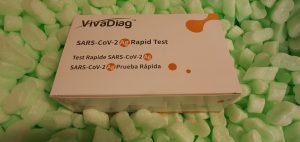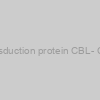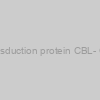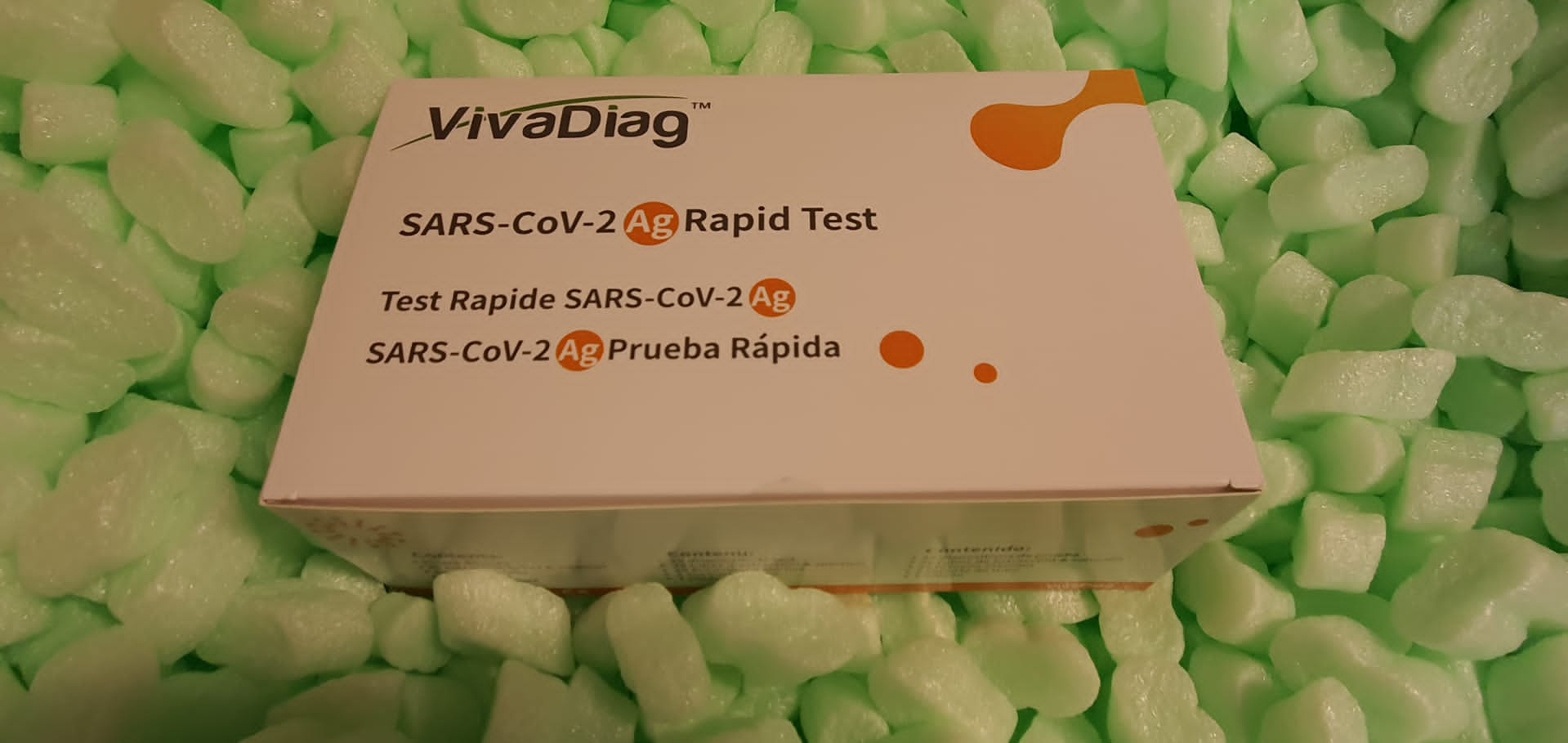Heterotrimeric G protein subunits Gαq and Gα11 are inhibited by two cyclic depsipeptides, FR900359 (FR) and YM-254890 (YM), each of that are getting used broadly to implicate Gq/11 proteins within the regulation of various organic processes. An rising main analysis query due to this fact is whether or not the mobile results of each inhibitors are on-target, i.e. mediated through particular inhibition of Gq/11 proteins, or off-target, i.e. the results of nonspecific interactions with different proteins. Right here we introduce a flexible experimental technique to discriminate between these potentialities. We developed a Gαq variant with preserved catalytic exercise, however refractory to FR/YM inhibition. A minimal of two amino acid adjustments have been required and ample to realize full inhibitor resistance. We characterised the
novel mutant in HEK293 cells depleted by CRISPR-Cas9 of endogenous Gαq and Gα11 to make sure exact management over the Gα-dependent mobile signaling route. Utilizing a battery of mobile outcomes with identified and hid Gq contribution, we discovered that FR/YM particularly inhibited mobile alerts following Gαq introduction through transient transfection. Conversely, each inhibitors have been inert throughout all assays in cells expressing the drug-resistant variant. These findings remove the chance that inhibition of non-Gq proteins contributes to the mobile results of the 2 depsipeptides.
We conclude that mixed software of FR or YM together with the drug-resistant Gαq variant is a strong in vitro technique to discern on-target Gq in opposition to off-target non-Gq motion. Consequently, it ought to be of excessive worth for uncovering Gq enter to advanced organic processes with excessive accuracy and the requisite specificity. Signaling between cells can promote each the event and development of most cancers. It has been discovered that chemical and bodily alerts, along with extracellular components, can affect most cancers development.
On this evaluate, we concentrate on the bodily microenvironment of most cancers cells and look at the motion of mechanical, electromagnetic, thermal, and acoustic alerts on most cancers cells, which can present new instructions for most cancers analysis and therapy. Thus, according to a lack of NMDAR operate, cocaine-induced ERK phosphorylation is attenuated. As a result of early NMDAR exercise contributes to the initiation of lasting addiction-relevant neuroadaptations, these information might maintain clues into mobile mechanisms liable for the event of cocaine habit.
Carbon dioxide-dependent sign transduction in mammalian programs
Carbon dioxide (CO2) is a elementary physiological gasoline identified to profoundly affect the behaviour and well being of hundreds of thousands of species inside the plant and animal kingdoms particularly. A latest Royal Society assembly on the subject of ‘Carbon dioxide detection in organic programs’ was extraordinarily revealing when it comes to the multitude of roles that completely different ranges of CO2 play in influencing crops and animals alike. Whereas excellent analysis has been carried out by main researchers within the space of plant biology, neuronal sensing, cell signalling, gasoline transport, irritation, lung operate and medical drugs, there’s nonetheless a lot to be realized about CO2-dependent sensing and signalling.
Notably, whereas a number of key sign transduction pathways and nodes of exercise have been recognized in crops and animals respectively, the exact wiring and sensitivity of those pathways to CO2 stays to be totally elucidated. On this article, we’ll give an summary of the literature referring to CO2-dependent sign transduction in mammalian programs. We’ll spotlight the primary sign transduction hubs by which CO2-dependent signalling is elicited with a view to raised understanding the advanced physiological response to CO2 in mammalian programs.
The principle subjects of dialogue on this article relate to how adjustments in CO2 affect mobile operate by modulation of sign transduction networks influenced by pH, mitochondrial operate, adenylate cyclase, calcium, transcriptional regulators, the adenosine monophosphate-activated protein kinase pathway and direct CO2-dependent protein modifications. Whereas every of those subjects might be mentioned independently, there’s proof of serious cross-talk between these sign transduction pathways as they reply to adjustments in CO2. In contemplating these core hubs of CO2-dependent sign transduction, we hope to delineate widespread components and establish areas wherein future analysis could possibly be greatest directed.

Cocaine-Induced Synaptic Redistribution of NMDARs in Striatal Neurons Alters NMDAR-Dependent Sign Transduction
he consequence of repeated cocaine publicity and extended abstinence on glutamate receptor expression within the nucleus accumbens has been extensively studied. Nevertheless, the early results of cocaine on NMDAR signaling stay unknown. NMDAR signaling is dependent upon the subunit composition, subcellular localization, and the interplay with proteins on the postsynaptic density (PSD), the place NMDARs and different proteins type supercomplexes which might be liable for the signaling pathways activated by NMDAR-induced Ca2+ inflow. Right here, we investigated the impact of cocaine on NMDAR
 Rat signal transduction-Smad1 ELISA Kit |
|
CN-01425R2 |
ChemNorm |
48T |
EUR 348 |
 Rat signal transduction-Smad1 ELISA Kit |
|
SL0627Ra |
Sunlong |
- |
EUR 498 |
|
|
 Mouse signal transduction-Smad1 ELISA Kit |
|
CN-02562M1 |
ChemNorm |
96T |
EUR 576 |
 Mouse signal transduction-Smad1 ELISA Kit |
|
CN-02562M2 |
ChemNorm |
48T |
EUR 397.2 |
 Human signal transduction-Smad1 ELISA Kit |
|
CN-03384H1 |
ChemNorm |
96T |
EUR 537.6 |
 Human signal transduction-Smad1 ELISA Kit |
|
CN-03384H2 |
ChemNorm |
48T |
EUR 356.4 |
 Rat signal transduction-Smad7 ELISA Kit |
|
CN-01426R1 |
ChemNorm |
96T |
EUR 530.4 |
 Rat signal transduction-Smad7 ELISA Kit |
|
CN-01426R2 |
ChemNorm |
48T |
EUR 351.6 |
 Human signal transduction-Smad7 ELISA Kit |
|
CN-03385H1 |
ChemNorm |
96T |
EUR 537.6 |
 Human signal transduction-Smad7 ELISA Kit |
|
CN-03385H2 |
ChemNorm |
48T |
EUR 356.4 |
 Human Signal transduction protein CBL- C, CBLC ELISA KIT |
|
ELI-50273h |
Lifescience Market |
96 Tests |
EUR 988.8 |
 Mouse Signal transduction protein CBL- C, Cblc ELISA KIT |
|
ELI-33118m |
Lifescience Market |
96 Tests |
EUR 1038 |
 Signal Transduction Monoclonal Antibody) Anti-ERK1 (E32) Signal Transduction Monoclonal Antibody |
|
ABP-MAB-ES001 |
Allele Biotech |
100 ug |
Ask for price |
|
|
 Signal Transduction Monoclonal Antibody) Anti-ERK1 (E19) Signal Transduction Monoclonal Antibody |
|
ABP-MAB-ES002 |
Allele Biotech |
100 ug |
Ask for price |
|
|
 Signal Transduction Monoclonal Antibody) Anti-ERK1/2 (E31R) Signal Transduction Monoclonal Antibody |
|
ABP-MAB-ES003 |
Allele Biotech |
100 ug |
Ask for price |
|
|
 Human KH domain-containing, RNA-binding, signal transduction-associated protein 1, KHDRBS1 ELISA Kit |
|
SL3701Hu |
Sunlong |
96 Tests |
EUR 468 |
|
|
 QuantiSir Specific Gene Knockdown Quantification Kit For Signal Transduction - ViDR |
|
P-5008 |
EpiGentek |
96 Assays |
EUR 945.66 |
) Bacillus subtilis Signal transduction histidine-protein kinase/phosphatase DegS (degS) |
|
1-CSB-EP320275BRJ |
Cusabio |
-
EUR 733.20
-
EUR 370.80
-
EUR 2192.40
-
EUR 1126.80
-
EUR 1461.60
-
EUR 476.40
|
- 100ug
- 10ug
- 1MG
- 200ug
- 500ug
- 50ug
|
|
|
|
Description: Recombinant Bacillus subtilis Signal transduction histidine-protein kinase/phosphatase DegS(degS) expressed in E.coli |
 Antibody) KH Domain Containing, RNA Binding, Signal Transduction Associated Protein 1 (KHDRBS1) Antibody |
|
20-abx104762 |
Abbexa |
-
EUR 560.40
-
EUR 159.60
-
EUR 1612.80
-
EUR 760.80
-
EUR 410.40
|
- 100 ug
- 10 ug
- 1 mg
- 200 ug
- 50 ug
|
|
|
 Antibody) KH Domain Containing, RNA Binding, Signal Transduction Associated Protein 1 (KHDRBS1) Antibody |
|
20-abx327286 |
Abbexa |
|
|
|
|
 Antibody) KH Domain Containing, RNA Binding, Signal Transduction Associated Protein 1 (KHDRBS1) Antibody |
|
20-abx128380 |
Abbexa |
-
EUR 543.60
-
EUR 159.60
-
EUR 1562.40
-
EUR 744.00
-
EUR 410.40
|
- 100 ug
- 10 ug
- 1 mg
- 200 ug
- 50 ug
|
|
|
) Recombinant KH Domain Containing, RNA Binding, Signal Transduction Associated Protein 1 (KHDRBS1) |
|
4-RPL650Hu01 |
Cloud-Clone |
-
EUR 599.54
-
EUR 283.20
-
EUR 1918.27
-
EUR 719.42
-
EUR 1318.85
-
EUR 476.40
-
EUR 4615.68
|
- 100 ug
- 10ug
- 1 mg
- 200 ug
- 500 ug
- 50ug
- 5 mg
|
|
|
|
Description: Recombinant Human KH Domain Containing, RNA Binding, Signal Transduction Associated Protein 1 expressed in: E.coli |
) Recombinant KH Domain Containing, RNA Binding, Signal Transduction Associated Protein 1 (KHDRBS1) |
|
4-RPL650Mu01 |
Cloud-Clone |
-
EUR 612.44
-
EUR 286.80
-
EUR 1966.66
-
EUR 735.55
-
EUR 1351.10
-
EUR 484.80
-
EUR 4736.64
|
- 100 ug
- 10ug
- 1 mg
- 200 ug
- 500 ug
- 50ug
- 5 mg
|
|
|
|
Description: Recombinant Mouse KH Domain Containing, RNA Binding, Signal Transduction Associated Protein 1 expressed in: E.coli |
) Recombinant KH Domain Containing, RNA Binding, Signal Transduction Associated Protein 1 (KHDRBS1) |
|
RPU42411-100ug |
Biomatik Corporation |
100ug |
EUR 564.3 |
) Recombinant KH Domain Containing, RNA Binding, Signal Transduction Associated Protein 1 (KHDRBS1) |
|
RPU42411-1mg |
Biomatik Corporation |
1mg |
EUR 2501.2 |
) Recombinant KH Domain Containing, RNA Binding, Signal Transduction Associated Protein 1 (KHDRBS1) |
|
RPU42411-50ug |
Biomatik Corporation |
50ug |
EUR 453.2 |
) Recombinant KH Domain Containing, RNA Binding, Signal Transduction Associated Protein 1 (KHDRBS1) |
|
RPU53374-100ug |
Biomatik Corporation |
100ug |
EUR 550 |
) Recombinant KH Domain Containing, RNA Binding, Signal Transduction Associated Protein 1 (KHDRBS1) |
|
RPU53374-1mg |
Biomatik Corporation |
1mg |
EUR 2434.9 |
) Recombinant KH Domain Containing, RNA Binding, Signal Transduction Associated Protein 1 (KHDRBS1) |
|
RPU53374-50ug |
Biomatik Corporation |
50ug |
EUR 441.1 |
) Recombinant KH Domain Containing, RNA Binding, Signal Transduction Associated Protein 1 (KHDRBS1) |
|
RPL650Hu01 |
Cloud-Clone |
10ug |
EUR 178 |
) Recombinant KH Domain Containing, RNA Binding, Signal Transduction Associated Protein 1 (KHDRBS1) |
|
RPL650Mu01 |
Cloud-Clone |
10ug |
EUR 183 |
 Protein) Mouse KH Domain Containing, RNA Binding, Signal Transduction Associated Protein 1 (KHDRBS1) Protein |
|
20-abx067639 |
Abbexa |
-
EUR 861.60
-
EUR 343.20
-
EUR 2648.40
-
EUR 1011.60
-
EUR 610.80
|
- 100 ug
- 10 ug
- 1 mg
- 200 ug
- 50 ug
|
|
|
 Protein) Human KH Domain Containing, RNA Binding, Signal Transduction Associated Protein 1 (KHDRBS1) Protein |
|
20-abx166241 |
Abbexa |
-
EUR 844.80
-
EUR 343.20
-
EUR 2581.20
-
EUR 994.80
-
EUR 594.00
|
- 100 ug
- 10 ug
- 1 mg
- 200 ug
- 50 ug
|
|
|
-Human KH domain containing, RNA binding, signal transduction associated 2 (KHDRBS2)) KHDRBS2 (untagged)-Human KH domain containing, RNA binding, signal transduction associated 2 (KHDRBS2) |
|
SC100752 |
Origene Technologies GmbH |
10 µg |
Ask for price |
-Human KH domain containing, RNA binding, signal transduction associated 3 (KHDRBS3)) KHDRBS3 (untagged)-Human KH domain containing, RNA binding, signal transduction associated 3 (KHDRBS3) |
|
SC320122 |
Origene Technologies GmbH |
10 µg |
Ask for price |
-Human KH domain containing, RNA binding, signal transduction associated 1 (KHDRBS1)) KHDRBS1 (untagged)-Human KH domain containing, RNA binding, signal transduction associated 1 (KHDRBS1) |
|
SC321372 |
Origene Technologies GmbH |
10 µg |
Ask for price |
 Antibody) KH Domain-Containing, RNA-Binding, Signal Transduction-Associated Protein 2 (KHDRBS2) Antibody |
|
abx224066-100ug |
Abbexa |
100 ug |
EUR 493.2 |
|
|
 Antibody) KH Domain-Containing, RNA-Binding, Signal Transduction-Associated Protein 2 (KHDRBS2) Antibody |
|
abx034990-400ul |
Abbexa |
400 ul |
EUR 627.6 |
|
|
 Antibody) KH Domain-Containing, RNA-Binding, Signal Transduction-Associated Protein 2 (KHDRBS2) Antibody |
|
abx034990-80l |
Abbexa |
80 µl |
EUR 343.2 |
|
|
 Antibody) KH Domain-Containing, RNA-Binding, Signal Transduction-Associated Protein 2 (KHDRBS2) Antibody |
|
20-abx007227 |
Abbexa |
-
EUR 493.20
-
EUR 710.40
-
EUR 218.40
-
EUR 376.80
|
- 100 ul
- 200 ul
- 20 ul
- 50 ul
|
|
|
 Antibody) KH Domain-Containing, RNA-Binding, Signal Transduction-Associated Protein 2 (KHDRBS2) Antibody |
|
20-abx307678 |
Abbexa |
-
EUR 493.20
-
EUR 2214.00
-
EUR 718.80
-
EUR 218.40
-
EUR 360.00
|
- 100 ug
- 1 mg
- 200 ug
- 20 ug
- 50 ug
|
|
|
) Recombinant Bacillus subtilis Signal transduction histidine-protein kinase/phosphatase DegS (degS) |
|
CSB-EP320275BRJ |
Cusabio |
2805 mg |
Ask for price |
) Recombinant Bacillus subtilis Signal transduction histidine-protein kinase/phosphatase DegS(degS) |
|
AP77330 |
SAB |
1mg |
EUR 2826 |
|
|
 - Mouse KH domain containing, RNA binding, signal transduction associated 2 (Khdrbs2), (10ug)) Khdrbs2 (untagged) - Mouse KH domain containing, RNA binding, signal transduction associated 2 (Khdrbs2), (10ug) |
|
MC212336 |
Origene Technologies GmbH |
10 µg |
Ask for price |
 - Mouse KH domain containing, RNA binding, signal transduction associated 3 (Khdrbs3), (10ug)) Khdrbs3 (untagged) - Mouse KH domain containing, RNA binding, signal transduction associated 3 (Khdrbs3), (10ug) |
|
MC207268 |
Origene Technologies GmbH |
10 µg |
Ask for price |
 - Mouse KH domain containing, RNA binding, signal transduction associated 3 (Khdrbs3)) Khdrbs3 (GFP-tagged) - Mouse KH domain containing, RNA binding, signal transduction associated 3 (Khdrbs3) |
|
MG205226 |
Origene Technologies GmbH |
10 µg |
Ask for price |
 - Mouse KH domain containing, RNA binding, signal transduction associated 1 (Khdrbs1)) Khdrbs1 (GFP-tagged) - Mouse KH domain containing, RNA binding, signal transduction associated 1 (Khdrbs1) |
|
MG207062 |
Origene Technologies GmbH |
10 µg |
Ask for price |
 - Mouse KH domain containing, RNA binding, signal transduction associated 1 (Khdrbs1), (10ug)) Khdrbs1 (untagged) - Mouse KH domain containing, RNA binding, signal transduction associated 1 (Khdrbs1), (10ug) |
|
MC200069 |
Origene Technologies GmbH |
10 µg |
Ask for price |
 - Human KH domain containing, RNA binding, signal transduction associated 2 (KHDRBS2)) KHDRBS2 (GFP-tagged) - Human KH domain containing, RNA binding, signal transduction associated 2 (KHDRBS2) |
|
RG205428 |
Origene Technologies GmbH |
10 µg |
Ask for price |
 - Human KH domain containing, RNA binding, signal transduction associated 3 (KHDRBS3)) KHDRBS3 (GFP-tagged) - Human KH domain containing, RNA binding, signal transduction associated 3 (KHDRBS3) |
|
RG209824 |
Origene Technologies GmbH |
10 µg |
Ask for price |
 - Human KH domain containing, RNA binding, signal transduction associated 1 (KHDRBS1)) KHDRBS1 (GFP-tagged) - Human KH domain containing, RNA binding, signal transduction associated 1 (KHDRBS1) |
|
RG200263 |
Origene Technologies GmbH |
10 µg |
Ask for price |
 Polyclonal Antibody) KH Domain Containing, RNA Binding, Signal Transduction Associated Protein 1 (KHDRBS1) Polyclonal Antibody |
|
CAU21424-100ul |
Biomatik Corporation |
100ul |
EUR 265.9 |
 Polyclonal Antibody) KH Domain Containing, RNA Binding, Signal Transduction Associated Protein 1 (KHDRBS1) Polyclonal Antibody |
|
CAU21424-200ul |
Biomatik Corporation |
200ul |
EUR 332.6 |
 Polyclonal Antibody) KH Domain Containing, RNA Binding, Signal Transduction Associated Protein 1 (KHDRBS1) Polyclonal Antibody |
|
CAU21425-100ul |
Biomatik Corporation |
100ul |
EUR 258.2 |
 Polyclonal Antibody) KH Domain Containing, RNA Binding, Signal Transduction Associated Protein 1 (KHDRBS1) Polyclonal Antibody |
|
CAU21425-200ul |
Biomatik Corporation |
200ul |
EUR 322.6 |
 - Rat KH domain containing, RNA binding, signal transduction associated 1 (Khdrbs1), (10 ug)) Khdrbs1 (untagged ORF) - Rat KH domain containing, RNA binding, signal transduction associated 1 (Khdrbs1), (10 ug) |
|
RN210978 |
Origene Technologies GmbH |
10 µg |
Ask for price |
 - Rat KH domain containing, RNA binding, signal transduction associated 3 (Khdrbs3), (10 ug)) Khdrbs3 (untagged ORF) - Rat KH domain containing, RNA binding, signal transduction associated 3 (Khdrbs3), (10 ug) |
|
RN205316 |
Origene Technologies GmbH |
10 µg |
Ask for price |
 - Rat KH domain containing, RNA binding, signal transduction associated 2 (Khdrbs2), (10 ug)) Khdrbs2 (untagged ORF) - Rat KH domain containing, RNA binding, signal transduction associated 2 (Khdrbs2), (10 ug) |
|
RN206772 |
Origene Technologies GmbH |
10 µg |
Ask for price |
 - Mouse KH domain containing RNA binding signal transduction associated 2 (Khdrbs2), (10ug)) Khdrbs2 (GFP-tagged) - Mouse KH domain containing RNA binding signal transduction associated 2 (Khdrbs2), (10ug) |
|
MG215998 |
Origene Technologies GmbH |
10 µg |
Ask for price |
 - Mouse KH domain containing, RNA binding, signal transduction associated 1 (Khdrbs1)) Khdrbs1 (Myc-DDK-tagged) - Mouse KH domain containing, RNA binding, signal transduction associated 1 (Khdrbs1) |
|
MR207062 |
Origene Technologies GmbH |
10 µg |
Ask for price |
 - Mouse KH domain containing, RNA binding, signal transduction associated 3 (Khdrbs3)) Khdrbs3 (Myc-DDK-tagged) - Mouse KH domain containing, RNA binding, signal transduction associated 3 (Khdrbs3) |
|
MR205226 |
Origene Technologies GmbH |
10 µg |
Ask for price |
-Human KH domain containing, RNA binding, signal transduction associated 3 (KHDRBS3)) KHDRBS3 (Myc-DDK-tagged)-Human KH domain containing, RNA binding, signal transduction associated 3 (KHDRBS3) |
|
RC209824 |
Origene Technologies GmbH |
10 µg |
Ask for price |
-Human KH domain containing, RNA binding, signal transduction associated 2 (KHDRBS2)) KHDRBS2 (Myc-DDK-tagged)-Human KH domain containing, RNA binding, signal transduction associated 2 (KHDRBS2) |
|
RC205428 |
Origene Technologies GmbH |
10 µg |
Ask for price |
-Human KH domain containing, RNA binding, signal transduction associated 1 (KHDRBS1)) KHDRBS1 (Myc-DDK-tagged)-Human KH domain containing, RNA binding, signal transduction associated 1 (KHDRBS1) |
|
RC200263 |
Origene Technologies GmbH |
10 µg |
Ask for price |
 - Mouse KH domain containing, RNA binding, signal transduction associated 2 (Khdrbs2)) Khdrbs2 (Myc-DDK-tagged) - Mouse KH domain containing, RNA binding, signal transduction associated 2 (Khdrbs2) |
|
MR215998 |
Origene Technologies GmbH |
10 µg |
Ask for price |
-Human cDNA FLJ36865 fis, clone ASTRO2016148, highly similar to Signal transduction protein CBL-B) (untagged)-Human cDNA FLJ36865 fis, clone ASTRO2016148, highly similar to Signal transduction protein CBL-B |
|
SC313320 |
Origene Technologies GmbH |
10 µg |
Ask for price |
 Polyclonal Antibody (Human)) KH Domain Containing, RNA Binding, Signal Transduction Associated Protein 1 (KHDRBS1) Polyclonal Antibody (Human) |
|
4-PAL650Hu01 |
Cloud-Clone |
-
EUR 313.20
-
EUR 3280.80
-
EUR 811.20
-
EUR 396.00
-
EUR 264.00
|
- 100ul
- 10ml
- 1ml
- 200ul
- 20ul
|
|
|
|
Description: A Rabbit polyclonal antibody against Human KH Domain Containing, RNA Binding, Signal Transduction Associated Protein 1 (KHDRBS1) |
) Polyclonal Antibody to KH Domain Containing, RNA Binding, Signal Transduction Associated Protein 1 (KHDRBS1) |
|
PAL650Hu01 |
Cloud-Clone |
100ul |
EUR 269 |
|
|
) Polyclonal Antibody to KH Domain Containing, RNA Binding, Signal Transduction Associated Protein 1 (KHDRBS1) |
|
PAL650Mu01 |
Cloud-Clone |
100ul |
EUR 277 |
|
|
 Polyclonal Antibody (Human), PE) KH Domain Containing, RNA Binding, Signal Transduction Associated Protein 1 (KHDRBS1) Polyclonal Antibody (Human), PE |
|
4-PAL650Hu01-PE |
Cloud-Clone |
-
EUR 375.60
-
EUR 3460.80
-
EUR 973.20
-
EUR 475.20
-
EUR 242.40
|
- 100ul
- 10ml
- 1ml
- 200ul
- 20ul
|
|
|
|
Description: A Rabbit polyclonal antibody against Human KH Domain Containing, RNA Binding, Signal Transduction Associated Protein 1 (KHDRBS1). This antibody is labeled with PE. |
, mGFP tagged) Lenti ORF clone of Human KH domain containing, RNA binding, signal transduction associated 3 (KHDRBS3), mGFP tagged |
|
RC209824L2 |
Origene Technologies GmbH |
10 µg |
Ask for price |
, mGFP tagged) Lenti ORF clone of Human KH domain containing, RNA binding, signal transduction associated 3 (KHDRBS3), mGFP tagged |
|
RC209824L4 |
Origene Technologies GmbH |
10 µg |
Ask for price |
, mGFP tagged) Lenti ORF clone of Human KH domain containing, RNA binding, signal transduction associated 2 (KHDRBS2), mGFP tagged |
|
RC205428L2 |
Origene Technologies GmbH |
10 µg |
Ask for price |
, mGFP tagged) Lenti ORF clone of Human KH domain containing, RNA binding, signal transduction associated 2 (KHDRBS2), mGFP tagged |
|
RC205428L4 |
Origene Technologies GmbH |
10 µg |
Ask for price |
, mGFP tagged) Lenti ORF clone of Human KH domain containing, RNA binding, signal transduction associated 1 (KHDRBS1), mGFP tagged |
|
RC200263L2 |
Origene Technologies GmbH |
10 µg |
Ask for price |
, mGFP tagged) Lenti ORF clone of Human KH domain containing, RNA binding, signal transduction associated 1 (KHDRBS1), mGFP tagged |
|
RC200263L4 |
Origene Technologies GmbH |
10 µg |
Ask for price |
 - Rat KH domain containing, RNA binding, signal transduction associated 3 (Khdrbs3), (10 ug)) Khdrbs3 (Myc-DDK-tagged ORF) - Rat KH domain containing, RNA binding, signal transduction associated 3 (Khdrbs3), (10 ug) |
|
RR205316 |
Origene Technologies GmbH |
10 µg |
Ask for price |
 - Rat KH domain containing, RNA binding, signal transduction associated 2 (Khdrbs2), (10 ug)) Khdrbs2 (Myc-DDK-tagged ORF) - Rat KH domain containing, RNA binding, signal transduction associated 2 (Khdrbs2), (10 ug) |
|
RR206772 |
Origene Technologies GmbH |
10 µg |
Ask for price |
 - Rat KH domain containing, RNA binding, signal transduction associated 1 (Khdrbs1), (10 ug)) Khdrbs1 (Myc-DDK-tagged ORF) - Rat KH domain containing, RNA binding, signal transduction associated 1 (Khdrbs1), (10 ug) |
|
RR210978 |
Origene Technologies GmbH |
10 µg |
Ask for price |
 Polyclonal Antibody (Human), APC) KH Domain Containing, RNA Binding, Signal Transduction Associated Protein 1 (KHDRBS1) Polyclonal Antibody (Human), APC |
|
4-PAL650Hu01-APC |
Cloud-Clone |
-
EUR 440.40
-
EUR 4297.20
-
EUR 1186.80
-
EUR 564.00
-
EUR 273.60
|
- 100ul
- 10ml
- 1ml
- 200ul
- 20ul
|
|
|
|
Description: A Rabbit polyclonal antibody against Human KH Domain Containing, RNA Binding, Signal Transduction Associated Protein 1 (KHDRBS1). This antibody is labeled with APC. |
 Polyclonal Antibody (Human), Cy3) KH Domain Containing, RNA Binding, Signal Transduction Associated Protein 1 (KHDRBS1) Polyclonal Antibody (Human), Cy3 |
|
4-PAL650Hu01-Cy3 |
Cloud-Clone |
-
EUR 536.40
-
EUR 5679.60
-
EUR 1532.40
-
EUR 702.00
-
EUR 315.60
|
- 100ul
- 10ml
- 1ml
- 200ul
- 20ul
|
|
|
|
Description: A Rabbit polyclonal antibody against Human KH Domain Containing, RNA Binding, Signal Transduction Associated Protein 1 (KHDRBS1). This antibody is labeled with Cy3. |
 Polyclonal Antibody (Human), FITC) KH Domain Containing, RNA Binding, Signal Transduction Associated Protein 1 (KHDRBS1) Polyclonal Antibody (Human), FITC |
|
4-PAL650Hu01-FITC |
Cloud-Clone |
-
EUR 375.60
-
EUR 3460.80
-
EUR 973.20
-
EUR 475.20
-
EUR 242.40
|
- 100ul
- 10ml
- 1ml
- 200ul
- 20ul
|
|
|
|
Description: A Rabbit polyclonal antibody against Human KH Domain Containing, RNA Binding, Signal Transduction Associated Protein 1 (KHDRBS1). This antibody is labeled with FITC. |
 Polyclonal Antibody (Human), HRP) KH Domain Containing, RNA Binding, Signal Transduction Associated Protein 1 (KHDRBS1) Polyclonal Antibody (Human), HRP |
|
4-PAL650Hu01-HRP |
Cloud-Clone |
-
EUR 400.80
-
EUR 3744.00
-
EUR 1047.60
-
EUR 508.80
-
EUR 256.80
|
- 100ul
- 10ml
- 1ml
- 200ul
- 20ul
|
|
|
|
Description: A Rabbit polyclonal antibody against Human KH Domain Containing, RNA Binding, Signal Transduction Associated Protein 1 (KHDRBS1). This antibody is labeled with HRP. |
 Polyclonal Antibody (Human, Mouse)) KH Domain Containing, RNA Binding, Signal Transduction Associated Protein 1 (KHDRBS1) Polyclonal Antibody (Human, Mouse) |
|
4-PAL650Mu01 |
Cloud-Clone |
-
EUR 319.20
-
EUR 3375.60
-
EUR 832.80
-
EUR 404.40
-
EUR 266.40
|
- 100ul
- 10ml
- 1ml
- 200ul
- 20ul
|
|
|
|
Description: A Rabbit polyclonal antibody against Human, Mouse KH Domain Containing, RNA Binding, Signal Transduction Associated Protein 1 (KHDRBS1) |
 Polyclonal Antibody (Human), APC-Cy7) KH Domain Containing, RNA Binding, Signal Transduction Associated Protein 1 (KHDRBS1) Polyclonal Antibody (Human), APC-Cy7 |
|
4-PAL650Hu01-APC-Cy7 |
Cloud-Clone |
-
EUR 736.80
-
EUR 8450.40
-
EUR 2229.60
-
EUR 985.20
-
EUR 404.40
|
- 100ul
- 10ml
- 1ml
- 200ul
- 20ul
|
|
|
|
Description: A Rabbit polyclonal antibody against Human KH Domain Containing, RNA Binding, Signal Transduction Associated Protein 1 (KHDRBS1). This antibody is labeled with APC-Cy7. |
 Polyclonal Antibody (Human, Mouse), APC) KH Domain Containing, RNA Binding, Signal Transduction Associated Protein 1 (KHDRBS1) Polyclonal Antibody (Human, Mouse), APC |
|
4-PAL650Mu01-APC |
Cloud-Clone |
-
EUR 448.80
-
EUR 4426.80
-
EUR 1219.20
-
EUR 577.20
-
EUR 278.40
|
- 100ul
- 10ml
- 1ml
- 200ul
- 20ul
|
|
|
|
Description: A Rabbit polyclonal antibody against Human, Mouse KH Domain Containing, RNA Binding, Signal Transduction Associated Protein 1 (KHDRBS1). This antibody is labeled with APC. |
 Polyclonal Antibody (Human, Mouse), Cy3) KH Domain Containing, RNA Binding, Signal Transduction Associated Protein 1 (KHDRBS1) Polyclonal Antibody (Human, Mouse), Cy3 |
|
4-PAL650Mu01-Cy3 |
Cloud-Clone |
-
EUR 548.40
-
EUR 5852.40
-
EUR 1575.60
-
EUR 720.00
-
EUR 320.40
|
- 100ul
- 10ml
- 1ml
- 200ul
- 20ul
|
|
|
|
Description: A Rabbit polyclonal antibody against Human, Mouse KH Domain Containing, RNA Binding, Signal Transduction Associated Protein 1 (KHDRBS1). This antibody is labeled with Cy3. |
 Polyclonal Antibody (Human, Mouse), HRP) KH Domain Containing, RNA Binding, Signal Transduction Associated Protein 1 (KHDRBS1) Polyclonal Antibody (Human, Mouse), HRP |
|
4-PAL650Mu01-HRP |
Cloud-Clone |
-
EUR 409.20
-
EUR 3855.60
-
EUR 1076.40
-
EUR 519.60
-
EUR 260.40
|
- 100ul
- 10ml
- 1ml
- 200ul
- 20ul
|
|
|
|
Description: A Rabbit polyclonal antibody against Human, Mouse KH Domain Containing, RNA Binding, Signal Transduction Associated Protein 1 (KHDRBS1). This antibody is labeled with HRP. |
 Polyclonal Antibody (Human, Mouse), PE) KH Domain Containing, RNA Binding, Signal Transduction Associated Protein 1 (KHDRBS1) Polyclonal Antibody (Human, Mouse), PE |
|
4-PAL650Mu01-PE |
Cloud-Clone |
-
EUR 382.80
-
EUR 3565.20
-
EUR 998.40
-
EUR 486.00
-
EUR 246.00
|
- 100ul
- 10ml
- 1ml
- 200ul
- 20ul
|
|
|
|
Description: A Rabbit polyclonal antibody against Human, Mouse KH Domain Containing, RNA Binding, Signal Transduction Associated Protein 1 (KHDRBS1). This antibody is labeled with PE. |
, Myc-DDK-tagged) Lenti ORF clone of Human KH domain containing, RNA binding, signal transduction associated 3 (KHDRBS3), Myc-DDK-tagged |
|
RC209824L1 |
Origene Technologies GmbH |
10 µg |
Ask for price |
, Myc-DDK-tagged) Lenti ORF clone of Human KH domain containing, RNA binding, signal transduction associated 3 (KHDRBS3), Myc-DDK-tagged |
|
RC209824L3 |
Origene Technologies GmbH |
10 µg |
Ask for price |
, Myc-DDK-tagged) Lenti ORF clone of Human KH domain containing, RNA binding, signal transduction associated 2 (KHDRBS2), Myc-DDK-tagged |
|
RC205428L1 |
Origene Technologies GmbH |
10 µg |
Ask for price |
, Myc-DDK-tagged) Lenti ORF clone of Human KH domain containing, RNA binding, signal transduction associated 2 (KHDRBS2), Myc-DDK-tagged |
|
RC205428L3 |
Origene Technologies GmbH |
10 µg |
Ask for price |
, Myc-DDK-tagged) Lenti ORF clone of Human KH domain containing, RNA binding, signal transduction associated 1 (KHDRBS1), Myc-DDK-tagged |
|
RC200263L1 |
Origene Technologies GmbH |
10 µg |
Ask for price |
, Myc-DDK-tagged) Lenti ORF clone of Human KH domain containing, RNA binding, signal transduction associated 1 (KHDRBS1), Myc-DDK-tagged |
|
RC200263L3 |
Origene Technologies GmbH |
10 µg |
Ask for price |
 for miRNA target validation) 3`UTR clone of KH domain containing RNA binding signal transduction associated 2 (KHDRBS2) for miRNA target validation |
|
SC212004 |
Origene Technologies GmbH |
10 µg |
Ask for price |
 for miRNA target validation) 3`UTR clone of KH domain containing RNA binding signal transduction associated 1 (KHDRBS1) for miRNA target validation |
|
SC213467 |
Origene Technologies GmbH |
10 µg |
Ask for price |
 for miRNA target validation) 3`UTR clone of KH domain containing RNA binding signal transduction associated 3 (KHDRBS3) for miRNA target validation |
|
SC207096 |
Origene Technologies GmbH |
10 µg |
Ask for price |
 Polyclonal Antibody (Human, Mouse), FITC) KH Domain Containing, RNA Binding, Signal Transduction Associated Protein 1 (KHDRBS1) Polyclonal Antibody (Human, Mouse), FITC |
|
4-PAL650Mu01-FITC |
Cloud-Clone |
-
EUR 382.80
-
EUR 3565.20
-
EUR 998.40
-
EUR 486.00
-
EUR 246.00
|
- 100ul
- 10ml
- 1ml
- 200ul
- 20ul
|
|
|
|
Description: A Rabbit polyclonal antibody against Human, Mouse KH Domain Containing, RNA Binding, Signal Transduction Associated Protein 1 (KHDRBS1). This antibody is labeled with FITC. |
 Polyclonal Antibody (Human), Biotinylated) KH Domain Containing, RNA Binding, Signal Transduction Associated Protein 1 (KHDRBS1) Polyclonal Antibody (Human), Biotinylated |
|
4-PAL650Hu01-Biotin |
Cloud-Clone |
-
EUR 392.40
-
EUR 3220.80
-
EUR 939.60
-
EUR 483.60
-
EUR 270.00
|
- 100ul
- 10ml
- 1ml
- 200ul
- 20ul
|
|
|
|
Description: A Rabbit polyclonal antibody against Human KH Domain Containing, RNA Binding, Signal Transduction Associated Protein 1 (KHDRBS1). This antibody is labeled with Biotin. |
 - Mouse KH domain containing, RNA binding, signal transduction associated 1 (Khdrbs1)) Lenti ORF clone of Khdrbs1 (mGFP-tagged) - Mouse KH domain containing, RNA binding, signal transduction associated 1 (Khdrbs1) |
|
MR207062L4 |
Origene Technologies GmbH |
10 µg |
Ask for price |
 - Mouse KH domain containing, RNA binding, signal transduction associated 3 (Khdrbs3)) Lenti ORF clone of Khdrbs3 (mGFP-tagged) - Mouse KH domain containing, RNA binding, signal transduction associated 3 (Khdrbs3) |
|
MR205226L4 |
Origene Technologies GmbH |
10 µg |
Ask for price |
 - Mouse KH domain containing, RNA binding, signal transduction associated 2 (Khdrbs2)) Lenti ORF clone of Khdrbs2 (mGFP-tagged) - Mouse KH domain containing, RNA binding, signal transduction associated 2 (Khdrbs2) |
|
MR215998L4 |
Origene Technologies GmbH |
10 µg |
Ask for price |
 Polyclonal Antibody (Human, Mouse), APC-Cy7) KH Domain Containing, RNA Binding, Signal Transduction Associated Protein 1 (KHDRBS1) Polyclonal Antibody (Human, Mouse), APC-Cy7 |
|
4-PAL650Mu01-APC-Cy7 |
Cloud-Clone |
-
EUR 753.60
-
EUR 8709.60
-
EUR 2294.40
-
EUR 1010.40
-
EUR 412.80
|
- 100ul
- 10ml
- 1ml
- 200ul
- 20ul
|
|
|
|
Description: A Rabbit polyclonal antibody against Human, Mouse KH Domain Containing, RNA Binding, Signal Transduction Associated Protein 1 (KHDRBS1). This antibody is labeled with APC-Cy7. |
 - Homo sapiens KH domain containing, RNA binding, signal transduction associated 1 (KHDRBS1), transcript variant 2) KHDRBS1 (untagged) - Homo sapiens KH domain containing, RNA binding, signal transduction associated 1 (KHDRBS1), transcript variant 2 |
|
SC333146 |
Origene Technologies GmbH |
10 µg |
Ask for price |
 - Mouse KH domain containing, RNA binding, signal transduction associated 1 (Khdrbs1)) Lenti ORF clone of Khdrbs1 (Myc-DDK-tagged) - Mouse KH domain containing, RNA binding, signal transduction associated 1 (Khdrbs1) |
|
MR207062L3 |
Origene Technologies GmbH |
10 µg |
Ask for price |
 - Mouse KH domain containing, RNA binding, signal transduction associated 3 (Khdrbs3)) Lenti ORF clone of Khdrbs3 (Myc-DDK-tagged) - Mouse KH domain containing, RNA binding, signal transduction associated 3 (Khdrbs3) |
|
MR205226L3 |
Origene Technologies GmbH |
10 µg |
Ask for price |
 - Mouse KH domain containing, RNA binding, signal transduction associated 2 (Khdrbs2)) Lenti ORF clone of Khdrbs2 (Myc-DDK-tagged) - Mouse KH domain containing, RNA binding, signal transduction associated 2 (Khdrbs2) |
|
MR215998L3 |
Origene Technologies GmbH |
10 µg |
Ask for price |
 - Rat KH domain containing, RNA binding, signal transduction associated 3 (Khdrbs3), (10 ug)) Lenti ORF clone of Khdrbs3 (mGFP-tagged ORF) - Rat KH domain containing, RNA binding, signal transduction associated 3 (Khdrbs3), (10 ug) |
|
RR205316L2 |
Origene Technologies GmbH |
10 µg |
Ask for price |
 - Rat KH domain containing, RNA binding, signal transduction associated 3 (Khdrbs3), (10 ug)) Lenti ORF clone of Khdrbs3 (mGFP-tagged ORF) - Rat KH domain containing, RNA binding, signal transduction associated 3 (Khdrbs3), (10 ug) |
|
RR205316L4 |
Origene Technologies GmbH |
10 µg |
Ask for price |
 - Rat KH domain containing, RNA binding, signal transduction associated 2 (Khdrbs2), (10 ug)) Lenti ORF clone of Khdrbs2 (mGFP-tagged ORF) - Rat KH domain containing, RNA binding, signal transduction associated 2 (Khdrbs2), (10 ug) |
|
RR206772L4 |
Origene Technologies GmbH |
10 µg |
Ask for price |
 - Rat KH domain containing, RNA binding, signal transduction associated 1 (Khdrbs1), (10 ug)) Lenti ORF clone of Khdrbs1 (mGFP-tagged ORF) - Rat KH domain containing, RNA binding, signal transduction associated 1 (Khdrbs1), (10 ug) |
|
RR210978L4 |
Origene Technologies GmbH |
10 µg |
Ask for price |
) ViraDuctin™ AAV Transduction Kit (50 Transductions) |
|
AAV-201 |
Cell Biolabs |
50 transductions |
EUR 845 |
) ViraDuctin™ AAV Transduction Kit (10 Transductions) |
|
AAV-200 |
Cell Biolabs |
10 transductions |
EUR 335 |
) ViraDuctin Lentivirus Transduction Kit (40 Transductions) |
|
LTV-200 |
Cell Biolabs |
40 transductions |
EUR 414 |
|
Description: Lentiviral expression has many advantages over other viruses, including the ability to infect both proliferating and non-proliferating cells. The efficiency of lentivirus infection of target cells, however, tends to be lower. Additives such as Polybrene can increase transduction efficiencies, but even then only a small fraction of lentiviral vectors can trasduce many target cell lines. Our ViraDuctin Lentivirus Transduction Kit provides superior lentiviral transduction efficiencies in a variety of cell lines, even when compared to transductions in the presence of Polybrene. This system is ideal for many primary cells as well as immobilized cells. |
) ViraDuctin Retrovirus Transduction Kit (40 Transductions) |
|
RV-200 |
Cell Biolabs |
40 transductions |
EUR 435.6 |
|
Description: The efficiency of retrovirus infection of target cells tends to be lower than that of adenovirus. Additives such as Polybrene® can increase transduction efficiencies, but even then only a small fraction of retroviral vectors can trasduce many target cell lines. Our ViraDuctin Retrovirus Transduction Kit provides superior transduction efficiencies in a variety of cell lines, even when compared to transductions in the presence of Polybrene®. This system is ideal for many primary cells as well as immobilized cells. |
 - Homo sapiens KH domain containing, RNA binding, signal transduction associated 1 (KHDRBS1), transcript variant 2) KHDRBS1 (GFP-tagged) - Homo sapiens KH domain containing, RNA binding, signal transduction associated 1 (KHDRBS1), transcript variant 2 |
|
RG234001 |
Origene Technologies GmbH |
10 µg |
Ask for price |
-Human KH domain containing, RNA binding, signal transduction associated 1, mRNA (cDNA clone MGC:19537 IMAGE:3956853), complete) KHDRBS1 (untagged)-Human KH domain containing, RNA binding, signal transduction associated 1, mRNA (cDNA clone MGC:19537 IMAGE:3956853), complete |
|
SC125789 |
Origene Technologies GmbH |
10 µg |
Ask for price |
-Human KH domain containing, RNA binding, signal transduction associated 1, mRNA (cDNA clone MGC:29538 IMAGE:5094155), complete) KHDRBS1 (untagged)-Human KH domain containing, RNA binding, signal transduction associated 1, mRNA (cDNA clone MGC:29538 IMAGE:5094155), complete |
|
SC126391 |
Origene Technologies GmbH |
10 µg |
Ask for price |
 Polyclonal Antibody (Human, Mouse), Biotinylated) KH Domain Containing, RNA Binding, Signal Transduction Associated Protein 1 (KHDRBS1) Polyclonal Antibody (Human, Mouse), Biotinylated |
|
4-PAL650Mu01-Biotin |
Cloud-Clone |
-
EUR 398.40
-
EUR 3315.60
-
EUR 963.60
-
EUR 493.20
-
EUR 273.60
|
- 100ul
- 10ml
- 1ml
- 200ul
- 20ul
|
|
|
|
Description: A Rabbit polyclonal antibody against Human, Mouse KH Domain Containing, RNA Binding, Signal Transduction Associated Protein 1 (KHDRBS1). This antibody is labeled with Biotin. |
 - Homo sapiens KH domain containing, RNA binding, signal transduction associated 1 (KHDRBS1), transcript variant 2) KHDRBS1 (Myc-DDK tagged) - Homo sapiens KH domain containing, RNA binding, signal transduction associated 1 (KHDRBS1), transcript variant 2 |
|
RC234001 |
Origene Technologies GmbH |
10 µg |
Ask for price |
) ViraDuctin™ Lentivirus Transduction Kit (200 Transductions) |
|
LTV-201 |
Cell Biolabs |
200 transductions |
EUR 635 |
) ViraDuctin™ Retrovirus Transduction Kit (200 Transductions) |
|
RV-201 |
Cell Biolabs |
200 transductions |
EUR 670 |
 - Rat KH domain containing, RNA binding, signal transduction associated 3 (Khdrbs3), (10 ug)) Lenti ORF clone of Khdrbs3 (Myc-DDK-tagged ORF) - Rat KH domain containing, RNA binding, signal transduction associated 3 (Khdrbs3), (10 ug) |
|
RR205316L1 |
Origene Technologies GmbH |
10 µg |
Ask for price |
 - Rat KH domain containing, RNA binding, signal transduction associated 3 (Khdrbs3), (10 ug)) Lenti ORF clone of Khdrbs3 (Myc-DDK-tagged ORF) - Rat KH domain containing, RNA binding, signal transduction associated 3 (Khdrbs3), (10 ug) |
|
RR205316L3 |
Origene Technologies GmbH |
10 µg |
Ask for price |
 - Rat KH domain containing, RNA binding, signal transduction associated 2 (Khdrbs2), (10 ug)) Lenti ORF clone of Khdrbs2 (Myc-DDK-tagged ORF) - Rat KH domain containing, RNA binding, signal transduction associated 2 (Khdrbs2), (10 ug) |
|
RR206772L3 |
Origene Technologies GmbH |
10 µg |
Ask for price |
 - Rat KH domain containing, RNA binding, signal transduction associated 1 (Khdrbs1), (10 ug)) Lenti ORF clone of Khdrbs1 (Myc-DDK-tagged ORF) - Rat KH domain containing, RNA binding, signal transduction associated 1 (Khdrbs1), (10 ug) |
|
RR210978L3 |
Origene Technologies GmbH |
10 µg |
Ask for price |
) ViraDuctin™ Adenovirus Transduction Kit (10 Transductions) |
|
AD-200 |
Cell Biolabs |
10 transductions |
EUR 325 |
 - Mouse KH domain containing, RNA binding, signal transduction associated 1 (Khdrbs1), 200ul, >10^7 TU/) Lenti ORF particles, Khdrbs1 (GFP-tagged) - Mouse KH domain containing, RNA binding, signal transduction associated 1 (Khdrbs1), 200ul, >10^7 TU/ |
|
MR207062L4V |
Origene Technologies GmbH |
200 µl |
Ask for price |
 - Mouse KH domain containing, RNA binding, signal transduction associated 3 (Khdrbs3), 200ul, >10^7 TU/) Lenti ORF particles, Khdrbs3 (GFP-tagged) - Mouse KH domain containing, RNA binding, signal transduction associated 3 (Khdrbs3), 200ul, >10^7 TU/ |
|
MR205226L4V |
Origene Technologies GmbH |
200 µl |
Ask for price |
 - Human KH domain containing, RNA binding, signal transduction associated 3 (KHDRBS3), 200ul, >10^7) Lenti ORF particles, KHDRBS3 (Myc-DDK tagged) - Human KH domain containing, RNA binding, signal transduction associated 3 (KHDRBS3), 200ul, >10^7 |
|
RC209824L1V |
Origene Technologies GmbH |
200 µl |
Ask for price |
 - Human KH domain containing, RNA binding, signal transduction associated 3 (KHDRBS3), 200ul, >10^7 TU) Lenti ORF particles, KHDRBS3 (mGFP-tagged) - Human KH domain containing, RNA binding, signal transduction associated 3 (KHDRBS3), 200ul, >10^7 TU |
|
RC209824L2V |
Origene Technologies GmbH |
200 µl |
Ask for price |
 - Human KH domain containing, RNA binding, signal transduction associated 3 (KHDRBS3), 200ul, >10^7) Lenti ORF particles, KHDRBS3 (Myc-DDK tagged) - Human KH domain containing, RNA binding, signal transduction associated 3 (KHDRBS3), 200ul, >10^7 |
|
RC209824L3V |
Origene Technologies GmbH |
200 µl |
Ask for price |
 - Human KH domain containing, RNA binding, signal transduction associated 3 (KHDRBS3), 200ul, >10^7 TU) Lenti ORF particles, KHDRBS3 (mGFP-tagged) - Human KH domain containing, RNA binding, signal transduction associated 3 (KHDRBS3), 200ul, >10^7 TU |
|
RC209824L4V |
Origene Technologies GmbH |
200 µl |
Ask for price |
 - Human KH domain containing, RNA binding, signal transduction associated 2 (KHDRBS2), 200ul, >10^7) Lenti ORF particles, KHDRBS2 (Myc-DDK tagged) - Human KH domain containing, RNA binding, signal transduction associated 2 (KHDRBS2), 200ul, >10^7 |
|
RC205428L1V |
Origene Technologies GmbH |
200 µl |
Ask for price |
 - Human KH domain containing, RNA binding, signal transduction associated 2 (KHDRBS2), 200ul, >10^7 TU) Lenti ORF particles, KHDRBS2 (mGFP-tagged) - Human KH domain containing, RNA binding, signal transduction associated 2 (KHDRBS2), 200ul, >10^7 TU |
|
RC205428L2V |
Origene Technologies GmbH |
200 µl |
Ask for price |
 - Human KH domain containing, RNA binding, signal transduction associated 2 (KHDRBS2), 200ul, >10^7) Lenti ORF particles, KHDRBS2 (Myc-DDK tagged) - Human KH domain containing, RNA binding, signal transduction associated 2 (KHDRBS2), 200ul, >10^7 |
|
RC205428L3V |
Origene Technologies GmbH |
200 µl |
Ask for price |
 - Human KH domain containing, RNA binding, signal transduction associated 2 (KHDRBS2), 200ul, >10^7 TU) Lenti ORF particles, KHDRBS2 (mGFP-tagged) - Human KH domain containing, RNA binding, signal transduction associated 2 (KHDRBS2), 200ul, >10^7 TU |
|
RC205428L4V |
Origene Technologies GmbH |
200 µl |
Ask for price |
 - Human KH domain containing, RNA binding, signal transduction associated 1 (KHDRBS1), 200ul, >10^7) Lenti ORF particles, KHDRBS1 (Myc-DDK tagged) - Human KH domain containing, RNA binding, signal transduction associated 1 (KHDRBS1), 200ul, >10^7 |
|
RC200263L1V |
Origene Technologies GmbH |
200 µl |
Ask for price |
 - Human KH domain containing, RNA binding, signal transduction associated 1 (KHDRBS1), 200ul, >10^7 TU) Lenti ORF particles, KHDRBS1 (mGFP-tagged) - Human KH domain containing, RNA binding, signal transduction associated 1 (KHDRBS1), 200ul, >10^7 TU |
|
RC200263L2V |
Origene Technologies GmbH |
200 µl |
Ask for price |
 - Human KH domain containing, RNA binding, signal transduction associated 1 (KHDRBS1), 200ul, >10^7) Lenti ORF particles, KHDRBS1 (Myc-DDK tagged) - Human KH domain containing, RNA binding, signal transduction associated 1 (KHDRBS1), 200ul, >10^7 |
|
RC200263L3V |
Origene Technologies GmbH |
200 µl |
Ask for price |
 - Human KH domain containing, RNA binding, signal transduction associated 1 (KHDRBS1), 200ul, >10^7 TU) Lenti ORF particles, KHDRBS1 (mGFP-tagged) - Human KH domain containing, RNA binding, signal transduction associated 1 (KHDRBS1), 200ul, >10^7 TU |
|
RC200263L4V |
Origene Technologies GmbH |
200 µl |
Ask for price |
subunit composition and subcellular localization after each intraperitoneal non-contingent cocaine and response-contingent intravenous cocaine self-administration in mice. We discovered that repeated cocaine publicity, whatever the route or contingency of drug administration, decreases NMDAR interactions with the PSD and synaptic lipid rafts within the accumbens shell and dorsal striatum. We offer proof that cocaine triggers an early redistribution of NMDARs from synaptic to extrasynaptic websites, and that this adaptation has implications within the activation of downstream signaling pathways.


